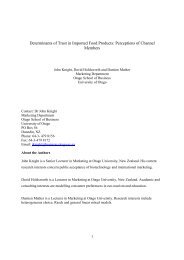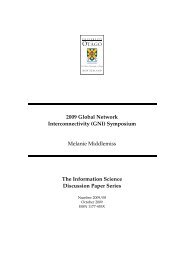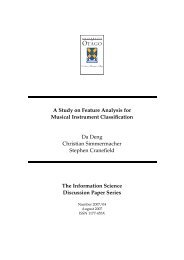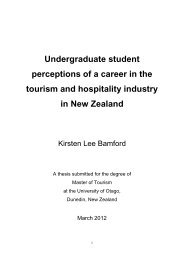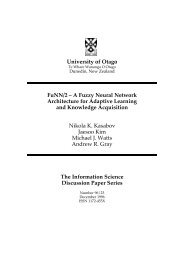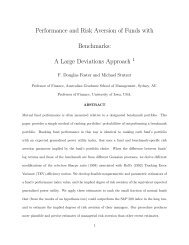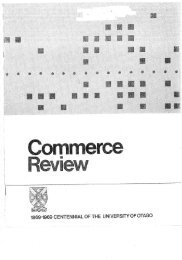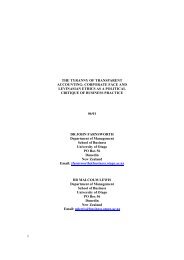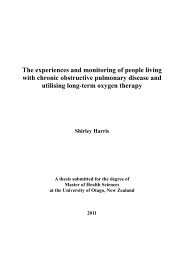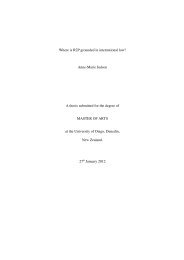University of Otago Cadastral - Otago University Research Archive
University of Otago Cadastral - Otago University Research Archive
University of Otago Cadastral - Otago University Research Archive
You also want an ePaper? Increase the reach of your titles
YUMPU automatically turns print PDFs into web optimized ePapers that Google loves.
British, where elders and traditional administrators were called as expert witnesses on<br />
traditional law and customs.<br />
Of all the supposed ills <strong>of</strong> the customary systems <strong>of</strong> land tenure, the feature considered<br />
most serious was<br />
group<br />
or communal ownership <strong>of</strong> land, and private ownership was<br />
considered progress<br />
to be encouraged. Communal ownership, however, is very resilient<br />
and would not evolve away. Two main reasons account for its resilience. First is the<br />
kinship and lineage organisation <strong>of</strong> society whereby descendants <strong>of</strong> a common ancestor live<br />
together and discourage i m m i g r ainto t i o<br />
their<br />
n community.<br />
The second is that a c c e s to s<br />
land in most <strong>of</strong> rural Africa continues to be determined by indigenous systems<br />
<strong>of</strong> land<br />
t e n u r e [Bruce l988]. The most important<br />
source <strong>of</strong> land rights is by inheritance. Before<br />
the introduction <strong>of</strong> the European concept <strong>of</strong> testacy, which is still not very commonly<br />
observed, a m a n sland rights upon his death either devolved upon his children as family<br />
property<br />
or reverts to a communal pool for reallocation by the responsible authorities.<br />
Nwabueze [l972, 45-46] notes that, in Nigeria, the devolution <strong>of</strong> the property upon<br />
children a p p lwith i e s equal force even where the property has been acquired and held by<br />
the intestate under English law. The operation <strong>of</strong> this rule imposes a severe limitation upon<br />
the process <strong>of</strong> individualisation; for it means that whatever progress is made in one<br />
generationis stultified in the n e x t . <br />
It is therefore not surprising that the natural evolution approach will not be supportedby<br />
all. Simpson {l976, 226] suggests that because t h e pace <strong>of</strong> political,<br />
change in the modern world has been so rapid that there simply<br />
social and economic<br />
has not been time for<br />
evolution", it may p r o vnecessary to<br />
e replace customary law rather than wait for it to<br />
e v o l v e . This latter approach was followed in Kenya where i nthe 1950s, the decision<br />
was taken, as a matter <strong>of</strong> major Government policy, to convert customary<br />
tenure to full<br />
individual ownership in order to promote the agricultural development which the<br />
uncertainty <strong>of</strong> customary tenure i n h i b i t e[Simpson d 1976, 2001.<br />
The usual outcomes have tended to be the provision <strong>of</strong> dual systems<br />
in which some lands<br />
are held under customary tenure while others are held under m o d e r n tenure. <br />
owners are encouraged to c o n v e r t to<br />
the m o d e r n system in order to gain certain<br />
advantages, like access to development loans. The result is that informal arrangements,<br />
outside the ambits <strong>of</strong> the law, generally develop as people strive to get the best <strong>of</strong> the old<br />
andthe new. The cadastral system does not only have to deal with concepts not provided<br />
Land<br />
9




